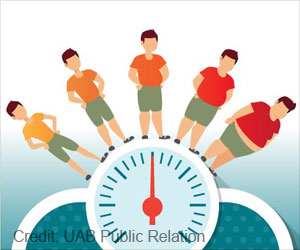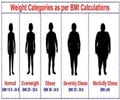Impact of COVID-19 lockdown on childhood obesity: COVID-19 pandemic has increased obesity risk in children aged three to five years old.

‘COVID-19 lockdown prevented young children (aged 3 - 5 years old) from leaving the house, reduced physical activity and increased the burden of childhood obesity.’
Read More..




Read More..
Advertisement
Is COVID-19 Lockdown Worsening Childhood Obesity
Previous studies in this area have often focused on children of school age or in countries with tighter restrictions than Sweden during the COVID-19 pandemic. In this country, activities at preschool and compulsory school (up to age 16) continued broadly as usual.The study was headed by Anton Holmgren, research associate in pediatrics at Sahlgrenska Academy, University of Gothenburg, and Anna Fält, researcher in child health and parenthood at Uppsala University.
Advertisement
Significant Rise in Body Mass Index (BMI)
The study documents a statistically significant rise in the BMI (body mass index) of three-year-old’s during the pandemic. Among the girls, the proportion with obesity rose from 2.8 percent before to 3.9 percent during the pandemic. For the boys, the corresponding proportions were 2.4 and 2.6 percent.The proportion of three-year-old girls with what is usually classified as normal weight declined from 82.6 percent before to 80.9 percent during the pandemic. There was no corresponding change in normal weight status in the group of three-year-old boys.
Among the four-year-old’s, there was a significant increase in BMI. Obesity rose in the girls and boys alike: Overweight rose from 11.1 to 12.8 percent of the girls, while underweight in the boys fell from 2.0 to 1.4 percent. The group of five-year-old’s showed no BMI changes.
BMI changes and socioeconomic status were found to be associated, most clearly among children in the most disadvantaged areas. There, the proportion of three- and four-year-olds with overweight rose from 9.5 to 12.4 and with obesity from 2.5 to 4.4 percent, while the proportion with normal weight decreased.
Advertisement
Managing Childhood Obesity During the COVID-19 Lockdown
Socioeconomic variables were measured using an established method, the Care Need Index (CNI), which classifies expected care requirements based on education level; the proportion of unemployed or in labor-market programs; the proportion of single parents; and the proportion born outside the western world.“Although Sweden didn’t have a lockdown in the same way as many other countries during the pandemic, the incidence of overweight and obesity increased in three- and four-year-old’s, and even at such a young age the socioeconomic differences are evident,” notes Anton Holmgren, the study's corresponding author.
“The study highlights the need for further efforts and interventions aimed at preventing childhood obesity, especially in areas of lower socioeconomic status,” he says.
Source-Eurekalert















